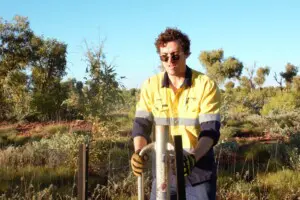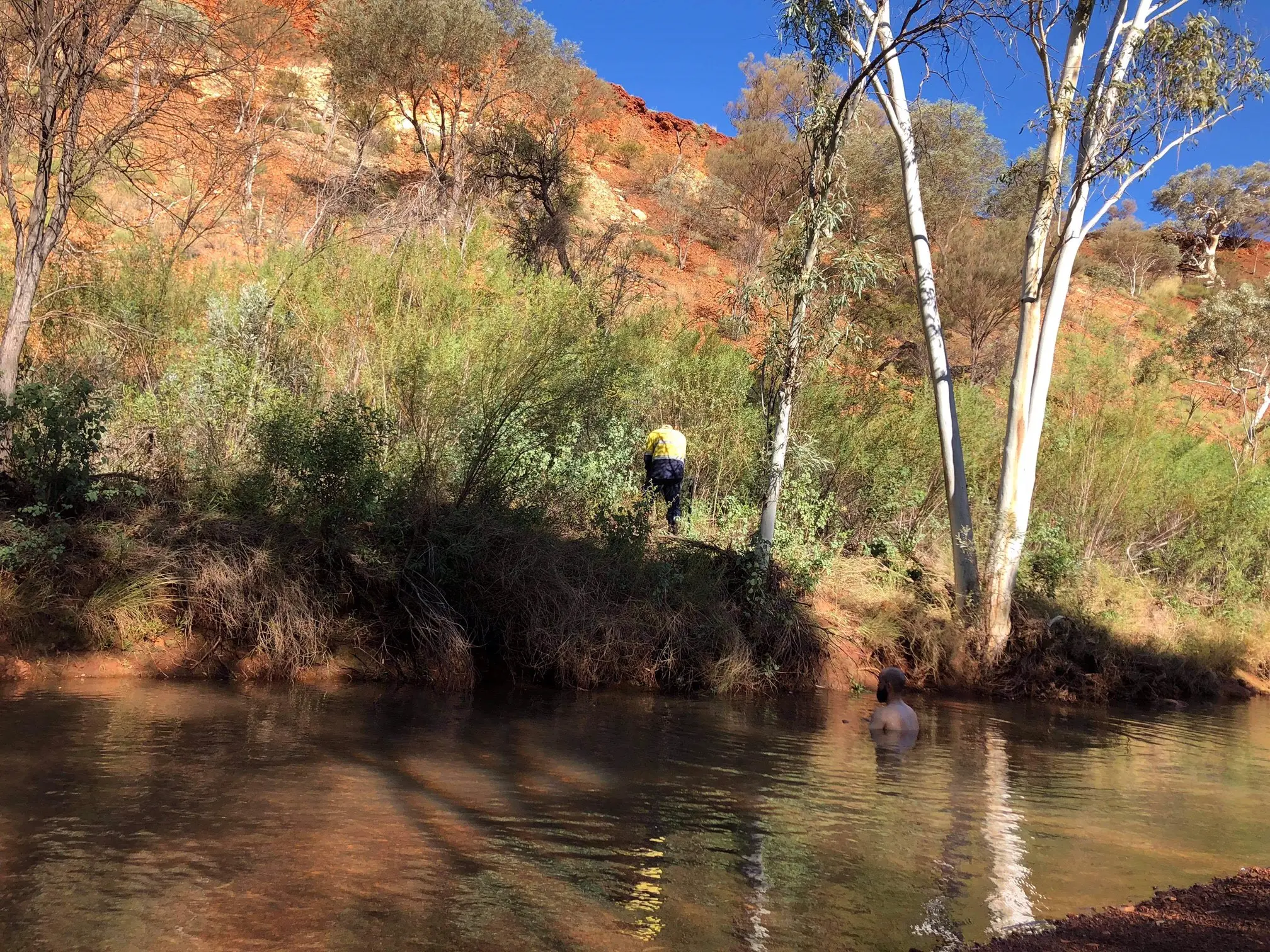 Understanding how Australia’s dryland plants function is integral to accurate environmental impact assessments, effective vegetation monitoring, and post-mining restoration efforts. However, one of the fundamental factors limiting this understanding is the scales at which we need to operate – the Pilbara alone covers the same area as a medium-sized European country. This means that some of our most fundamental questions, such as when and how fast trees grow, are extremely difficult to answer.
Understanding how Australia’s dryland plants function is integral to accurate environmental impact assessments, effective vegetation monitoring, and post-mining restoration efforts. However, one of the fundamental factors limiting this understanding is the scales at which we need to operate – the Pilbara alone covers the same area as a medium-sized European country. This means that some of our most fundamental questions, such as when and how fast trees grow, are extremely difficult to answer.
As an inaugural CRC TiME scholar, the aim of my PhD was to address this research gap. For the first two years of my PhD, I embarked on monthly field trips to the Pilbara, traversing ~1200 km from Karratha to the Little Sandy Desert and back again. Along the way, we collected a suite of measurements on the density of tree canopies in rivers, the amount of litter they were producing and the types of species that were present.
As a result of this extensive field campaign, we now have a much better understanding of riverine tree dynamics. Importantly, we also learned how these processes interact with water availability which will help reduce the uncertainty in land management decision making.
In addition to providing fantastic research opportunities, these trips were an immersive learning experience that deepened my understanding of Pilbara ecosystems and resource management challenges prevalent in the region. I worked closely with industry partners from Rio Tinto and rangers at the Department of Biodiversity, Conservation and Attractions, discussed challenges to their work and ways to better facilitate mutually beneficial research outcomes.

A recurring theme from these conversations was the need for cost-effective strategies to monitor vegetation at scale with much greater accuracy. While this wasn’t my original aim, the funding from CRC TiME gave me the freedom and resources to act on that need. As a key achievement – we developed the first satellite model for measuring and monitoring leaf area that is specifically tailored to Australia’s unique dryland vegetation. I also validated a new method for separately measuring leaf and wood surface area without needing to cut down any trees using canopy photography taken on-ground. These innovations enhance our ability to assess environmental carbon stocks and monitor vegetation health into the future but also provide a powerful tool for historic pattern analysis—a vital asset for informed decision-making in ecological conservation.
 As a recipient of CRC TiME’s top-up scholarship, I can confidently attest to its transformative impact. Not only has the program played an important role in my research pursuits but also equipped me with the essential skills and experiences necessary to thrive in the rapidly evolving resource management landscape. The program provided an opportunity for multi-disciplinary connection, a catalyst for innovation, and a testament to the power of collaboration in realising sustainable development goals. I am immensely grateful for the opportunity it has afforded me.
As a recipient of CRC TiME’s top-up scholarship, I can confidently attest to its transformative impact. Not only has the program played an important role in my research pursuits but also equipped me with the essential skills and experiences necessary to thrive in the rapidly evolving resource management landscape. The program provided an opportunity for multi-disciplinary connection, a catalyst for innovation, and a testament to the power of collaboration in realising sustainable development goals. I am immensely grateful for the opportunity it has afforded me.
Scholarships of up to 4 years’ duration are now available to eligible Higher Degree Research (HDR) students who participate in CRC TiME research programs.
Jake Eckersley
The University of Western Australia

